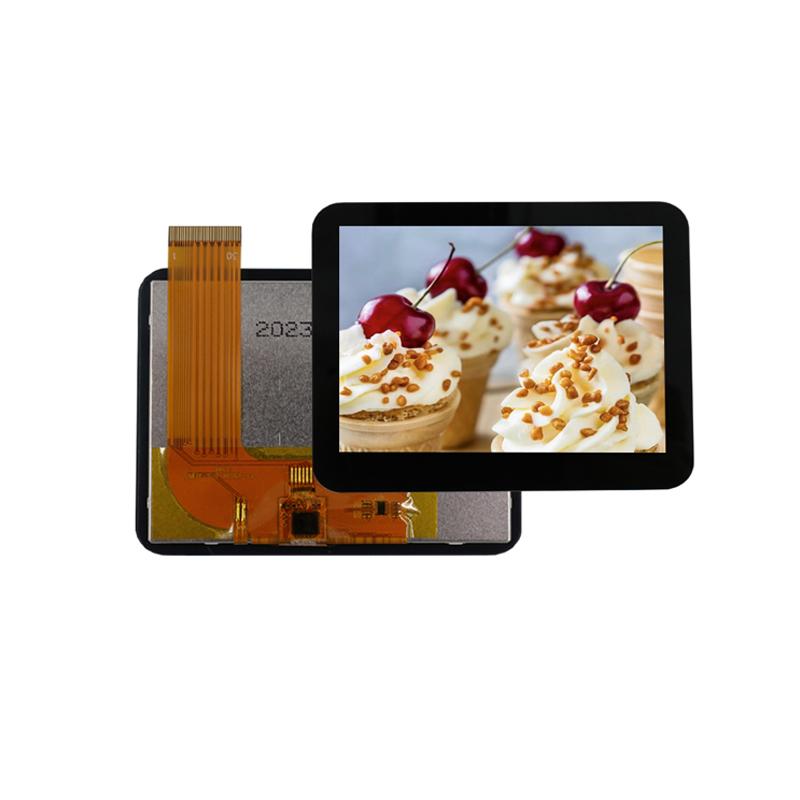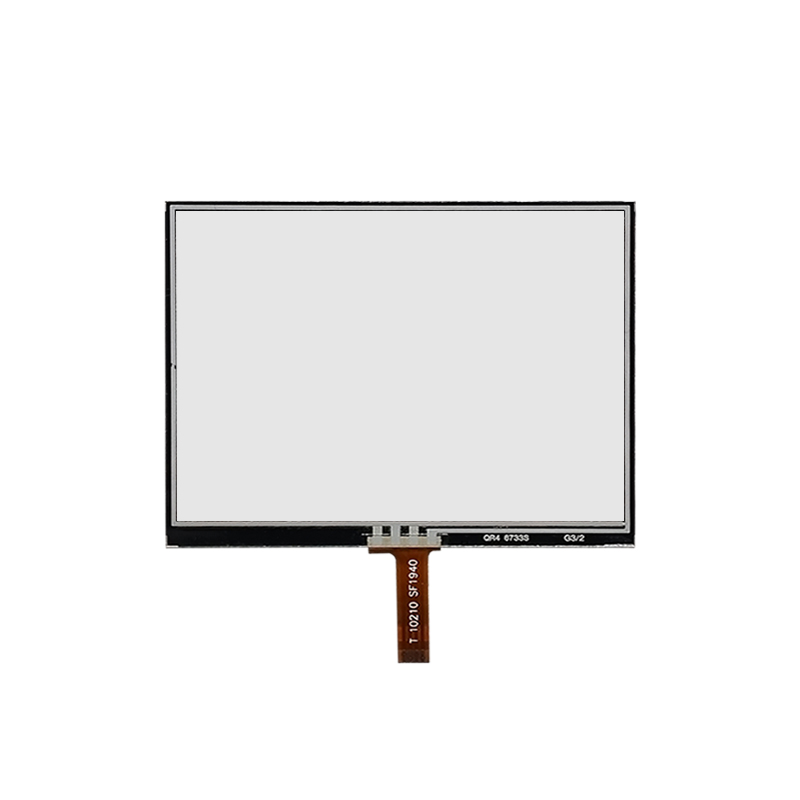
あなたはそれを見ます 3.5インチRTPタッチパネル 産業用制御システムに最適です。堅牢な構造で長期間の使用に耐えます。多くのエンジニアが防水パネルを必要とする場所に使用しています。これらのパネルは手袋やスタイラスペンでも操作でき、表面は厳格な安全規則に準拠しています。
これらのパネルは傷や摩耗に強く、過酷な環境にも耐え、画面に水や汚れが付着しても正常に動作します。
電磁干渉の影響を受けないので、厳しい状況でも問題なく動作します。
TFT LCDなどの他の選択肢と比較すると、寿命が長く、コストも抑えられます。そのため、過酷な作業にも最適です。
3.5インチRTPタッチパネルは非常に頑丈です。傷がつきにくく、埃や水から保護します。落下にも耐えられるため、過酷な産業環境に最適です。
これらのパネルは、どんな手袋やスタイラスペンでも操作できます。作業者は安全かつ簡単に機械を操作できます。安全装備を外す必要はありません。
長寿命なのでコスト削減にもつながります。また、他のタッチパネルよりもコストが安く、修理や交換の回数も減ります。
小型で柔軟な形状のため、狭いスペースにもフィットします。これにより、小型で便利な産業用工具や機械の製造に役立ちます。
RTPタッチパネルは過酷な環境でも優れた性能を発揮します。熱、寒さ、ほこり、湿気にも耐え、機械の稼働を維持し、長時間の休止を防ぎます。
過酷な環境でも使えるツールが必要です。3.5インチRTPタッチパネルは、傷、埃、水から保護します。パネルは強度の高い素材を使用し、しっかりと組み立てられています。そのため、落下や衝撃による破損を防ぎます。メーカーは、これらのパネルを熱、寒さ、振動に対してテストしています。高温、低温、湿気の多い場所でも動作します。カバーガラスの接着により、保護性能がさらに向上しています。内部部品への水や汚れの侵入を防ぎます。これらのパネルは、過酷な工場環境でも長期間使用できます。
作業員は手袋を着用したり、スタイラスペンを使用したりすることが一般的です。3.5インチRTPタッチパネルは、どちらにも対応しています。特別な手袋や高価なスタイラスペンは必要ありません。どんな手袋でも、どんな硬いスタイラスペンでも使えます。これにより、作業がより安全かつ容易になります。下の表で違いをご確認ください。
特徴 | 3.5インチ RTP(抵抗膜方式タッチパネル) | 静電容量式タッチパネル |
|---|---|---|
入力方法 | 指、手袋、またはスタイラスでタッチ | 素指または特殊な静電容量式スタイラス |
手袋着用時の使いやすさ | あらゆる手袋や硬いスタイラスで使用可能 | 通常の手袋では使用できません |
入力精度 | ワンタッチタスクに最適 | マルチタッチタスクの場合はさらに高い |
スタイラスの互換性 | 硬質スタイラス | 特殊な静電容量式スタイラスが必要 |
手袋をしたままでも機械を使用できます。これにより時間の節約になり、手を安全に保つことができます。
コストを抑えつつ、高品質な製品を手に入れたいとお考えですか?3.5インチRTPタッチパネルは高価ではありません。シンプルな層と材料を使用しているため、他のタッチパネルよりも製造コストが低く抑えられます。余分なものを購入する必要もありません。パネルは長寿命なので、修理や交換にかかる費用を抑えることができます。長く使い続ければ、コスト削減にもつながります。
ヒント: RTP タッチ パネルを選択すると、コストを節約しながら業界のルールを満たすことができます。
多くの機械には十分なスペースがありません。3.5インチRTPタッチパネルは、狭いスペースや特殊なスペースにもフィットします。ハンドヘルドツールや狭いパネルにも使用できます。小型サイズが役立つ理由は以下のとおりです。
3.5インチのパネルは 320x480ディスプレイ小型ツールでは一般的です。
軽量なので入れやすいです。
柔軟なデザインにより、さまざまな形状に適合できます。
多くの機能を 1 つのデバイスにまとめ、スペースを節約できます。
特別なニーズに合わせてサイズや形状をカスタマイズすることも可能です。
より多くの設計方法が得られ、より小型でスマートなツールを作成できます。
常に機能するツールが必要です。3.5インチRTPタッチパネルは、状況が変化しても問題なく動作します。メーカーは、各パネルを熱、寒さ、振動に対してテストし、バッチごとに品質を確認しています。カバーガラスと丁寧な組み立てにより、水や汚れの侵入を防ぎます。これらのパネルは、高温、低温、湿気、埃の多い場所でも動作します。つまり、修理にかかる時間を減らし、作業時間を増やすことができます。
多くの工場では、3.5インチのRTPタッチパネルが採用されています。これらのパネルは、機械の監視やラインの制御に役立ちます。設備の稼働状況を確認したり、工程番号を確認したり、変化に素早く対応したりできます。また、埃や水のある場所でも操作できるため、破損の心配もありません。手袋やスタイラスペンで画面をタッチできるため、作業中の手への負担を軽減できます。
一般的なアプリケーションは次のとおりです。
ラインがどのように機能しているかを見る
機械の稼働状況を確認する
プロセス番号を見る
機械の操作や変更には、機械パネルを使用します。3.5インチのRTPタッチパネルは、機械の小さなスペースにもフィットします。クリアな画面と快適なボタン操作を実現。パネルはぶつけても壊れません。荒れた場所でも操作しやすい設計です。手袋をはめたままでも、ボタンを押したりデータを入力したりできます。
ヒント: これらのパネルを使用すると、作業が速くなり、ミスが少なくなります。
テスト機器にはシンプルで堅牢な画面が必要です。3.5インチRTPタッチパネルは、まさにその点で頼りになる製品です。テストの開始、数値の設定、結果の読み取りをワンタッチで行えます。パネルは耐久性に優れ、傷がつきにくい設計です。スタイラスペンや手袋をはめた指でも操作できます。そのため、ラボやワークショップに最適です。
多くのポータブルツールには3.5インチのRTPタッチパネルが搭載されています。これらのパネルは優れた精度と高速応答性を備えており、操作が難しい場所でも操作でき、明るい場所でも暗い場所でも見やすいです。移動時は手袋やスタイラスペンを使用できます。
強くて丈夫な造り
手袋やスタイラスで簡単に使用できます
どんな光でも見やすい
多くのシステムで動作します
プロセス監視には信頼できるツールが必要です。3.5インチRTPタッチパネルは、埃、水、衝撃に強い堅牢な画面を提供します。手袋をしたままでも正確にタッチできます。パネルはシステムへの接続も高速です。リアルタイムのデータを確認し、すぐに操作できます。アンチグレアとジェスチャー操作により、作業効率と安全性が向上します。
これらのパネルは、困難な場所でも物事を順調かつ安全に実行するのに役立ちます。

産業用制御機器では、主に抵抗膜式(RTP)と静電容量式の2種類のタッチパネルが使用されています。それぞれ動作原理が異なります。抵抗膜式タッチパネルは画面上の圧力を感知します。指、スタイラス、さらには手袋でも操作できます。そのため、RTPパネルは工場や屋外作業に最適です。静電容量式タッチパネルは電界の変化を感知します。素指または専用のスタイラスを使用する必要があります。通常の手袋では静電容量式タッチパネルは操作できません。
主な違いは次のとおりです。
RTPパネルでは、あらゆる物体を使って画面をタッチできます。手袋を着用したり、ペンを使ったりすることも可能です。
静電容量式パネルにより、スムーズで高速な応答が可能になり、ピンチやズームなどのマルチタッチ ジェスチャがサポートされます。
RTPパネルは、埃っぽい場所、湿気の多い場所、汚れた場所でも問題なく機能します。埃や湿気に強いです。
静電容量式パネルはガラス表面を使用しているため、より鮮明な画像を表示し、寿命も長くなります。
特徴 | RTPタッチパネル | 静電容量式タッチパネル |
|---|---|---|
入力方法 | 指、手袋、スタイラス | 素指、専用スタイラス |
マルチタッチ | No | はい |
手袋を着用して使用してください | はい | No |
防塵・防湿 | はい | 少ない |
ディスプレイの鮮明さ | 良い | 素晴らしい |
手袋とスタイラスの使用が最も重要となる厳しい作業でも、RTP パネルを信頼していただけます。
RTPパネルとTFT LCDディスプレイの違いについて疑問に思われるかもしれません。TFT LCDはThin-Film Transistor Liquid Crystal Display(薄膜トランジスタ液晶ディスプレイ)の略です。これは表示技術であり、タッチ方式ではありません。多くのRTPパネルは、タッチレイヤーの背後にあるディスプレイとしてTFT LCDを使用しています。TFT LCDは鮮やかな色彩と鮮明な画像を提供します。試験装置からポータブルツールまで、多くのデバイスでTFT LCDディスプレイが使用されています。
RTPパネルはTFT液晶画面にタッチコントロール機能を追加します。鮮明な映像と簡単な入力を両立します。
TFT LCDディスプレイ 静電容量式や OLED オーバーレイなどの他のタッチ タイプでも適切に動作します。
TFT LCD にはさまざまなサイズがありますが、3.5 インチ サイズは狭いスペースやハンドヘルド デバイスに適しています。
TFT LCD は高輝度をサポートし、日光下や暗い部屋でも読みやすくなっています。
VATN LCD、OLED、グラフィックLCDなど、他のディスプレイタイプも存在します。それぞれに長所があります。ほとんどの産業用制御機器では、TFT LCDを搭載した3.5インチRTPタッチパネルが、耐久性、使いやすさ、鮮明な表示のバランスに優れています。
注: 幅広い高度なディスプレイ テクノロジから選択できますが、RTP タッチと TFT LCD を組み合わせると、多くの場合、産業ニーズに最適な組み合わせが得られます。
3.5インチRTPタッチパネルを現在のシステムでスムーズに動作させたいですよね?まずは、パネルが通信プロトコルに対応しているかどうかを確認してください。この手順は、新しいデバイスを接続する際に問題が発生するのを防ぐのに役立ちます。次に、ソフトウェアが新しいパネルに対応していることを確認してください。一部のプログラムでは、アップデートや変更が必要になる場合があります。
スムーズにセットアップするには、次の手順に従ってください。
システムの通信プロトコルとの互換性を確認します。
必要なすべてのアプリケーションのソフトウェア サポートを確認します。
物理的なスペースと取り付けオプションを確認してください。パネルに大きな変更を加えることなく設置できることを確認してください。
業界のニーズに合わせてパネルの表示と入力設定をカスタマイズします。
ファイアウォールや暗号化などのセキュリティ機能を追加して、データを保護します。
パネルの使用方法とトラブルシューティング方法についてチームをトレーニングします。
ヒント: パネルのサイズ、インターフェース、機能をカスタマイズしてご注文いただけます。これにより、工場や研究室の特別なニーズにも対応できます。
RTPタッチパネルは4線式/5線式抵抗膜方式を採用しています。この設計により、手袋やスタイラスペンを装着した状態でも、正確で信頼性の高いタッチ操作が可能です。Windows、Linux、Android、QNXなど、多くのオペレーティングシステムでご利用いただけます。
タッチパネルを長く使いたいですよね。定期的なメンテナンスで良好な動作を維持できます。まずはソフトウェアの最新バージョンがリリースされたらアップデートしましょう。このステップはバグを回避し、システムの安全性を維持するのに役立ちます。
パネルに摩耗の兆候がないか確認してください。傷、色あせ、タッチ感度の変化などがないか確認してください。表面は柔らかく乾いた布で拭いてください。偏光フィルムを損傷したり、変色させたりする可能性のある強力な化学薬品は使用しないでください。
一般的な問題は次のとおりです:
同じ画面を長時間オンにしたままにしておくと、画像が消えたりゴーストが表示されたりすることがあります。
腐食や物理的ストレスによる接続の問題。
過度の熱や日光によるダメージ。
注記: 定期的な点検をスケジュールし、スタッフにトラブルの兆候を早期に発見できるようトレーニングを実施しましょう。迅速な対応は、大きな問題を防ぎ、設備の円滑な稼働を維持することにつながります。
3.5インチRTPタッチパネルは、操作性に優れています。正確なタッチ操作が可能で、非常に頑丈です。システムへの追加も簡単です。手袋やスタイラスペンを装着したままでも操作できるため、専門家にも好評です。堅牢な構造で、多くのシステムに対応しています。
特徴 | なぜそれがあなたにとって重要なのか |
|---|---|
タッチテクノロジー | 手袋やスタイラスで使用可能 |
耐久性 | 厳しい環境にも対応 |
カスタマイズ | お客様の特定のニーズに適合 |
動作範囲 | 高温または低温条件でも機能します |
システム互換性 | 多くのオペレーティングシステムをサポート |
TFT液晶とタッチパネルに関するガイドとヘルプが見つかります。さらに詳しく知りたい場合は、信頼できるブランドの記事や製品詳細をご覧ください。
RTPは抵抗膜方式タッチパネルの略です。画面を押すことで操作します。パネルは指、手袋、またはスタイラスからの圧力を感知します。そのため、過酷な作業環境に最適です。
はい、これらのパネルは屋外でもご使用いただけます。直射日光、雨、埃の中でも問題なく機能します。頑丈な構造により、スクリーンを天候や汚れから保護します。
画面を拭く際は、柔らかく乾いた布を使用してください。刺激の強い化学薬品や粗い素材は避けてください。優しく拭くことで、パネルを良好な状態に保つことができます。
これらのパネルは、工場の機械、試験装置、ポータブルツール、プロセスモニターなどに使用されています。狭いスペースにも収まり、過酷な作業にも対応します。
RTPパネルは、手袋やスタイラスペンの使用、高い耐久性、そして過酷な環境でも信頼性の高いパフォーマンスを必要とする場合にお選びいただけます。静電容量式パネルは素手で操作する必要があり、手袋をしたままでは操作しにくいです。
著作権
© 2017 Guangdong Shengfeng Technology Co., Ltd. 全著作権所有
.サイトマップ
| ブログ
| Xml | プライバシーポリシー  サポートされているネットワーク
サポートされているネットワーク